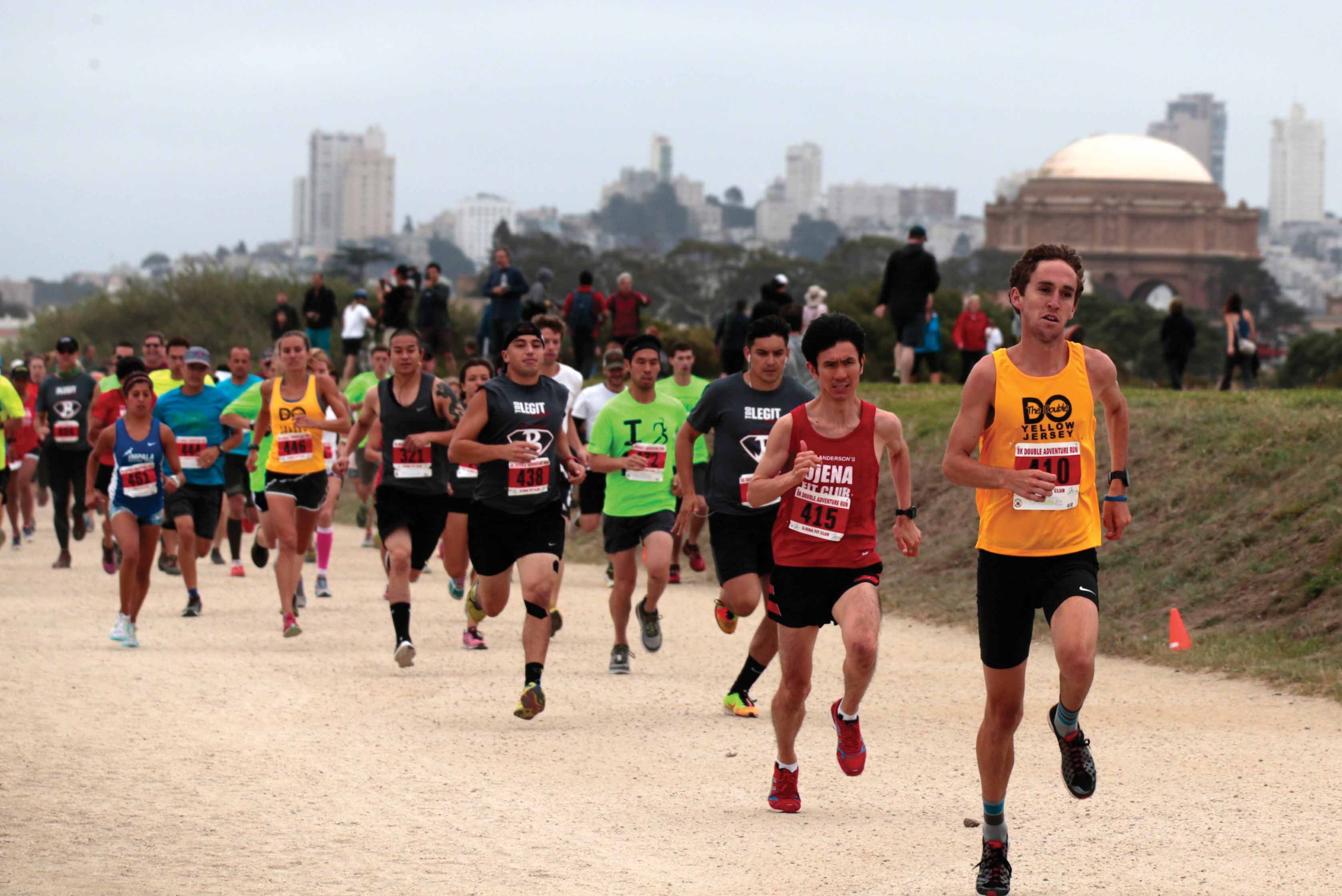This Running Race Will Make You A Better Triathlete

The Golden Gate Double
Try the challenging Double Road Race to improve your triathlon run split.
The brick workout is a staple of any multisport athlete’s training. Although these back-to-back efforts help us switch gears in a triathlon or duathlon, it takes the will of a warrior to nail race-pace effort near the end of a long brick workout.
Enter the Double Road Race, a challenging running event that gives multisport athletes a new way to build fitness in a fun, competitive environment. Most of us perform better with a number pinned to our chest, so doing a double run race can fuel you to perform at a solid effort on tired legs.
“It’s hard for some athletes to grasp the concept of running twice,” says Double Road Race founder Bob Anderson. “Like triathlon, it’s something you have to learn by doing.”
Launched in 2010, the Double Road Race includes two separate running races that range from 2K to 10K. The “half time” clock, usually set to an hour and 45 minutes, goes off when the first event starts. The faster you finish the first run, the more time you have before the second, shorter run. Distances range from a “sprint” (3K and 2K) to the popular 15K double (10K and 5K).
During half time, runners head to the “recovery zone.” Athletes can opt for a massage, a chiropractic session, a spin on one of the provided spin bikes, or just lie down. “We offer a lot of options for people to prepare for the second stage,” Anderson says.
Want to take full advantage of the double for your triathlon fitness? First, take in some fuel right after your first leg and start spinning as soon as possible. In lieu of a spin bike, you can set up your own bike and trainer in the parking lot or another out-of-the-way area.
Jonathan Lee, a multisport coach based in Santa Rosa, Calif., recommends riding for the same amount of time as your first run, riding in at least Zone 3 and working up to threshold effort. “You don’t need to go all out on the bike for it to be a great workout value, but make sure you’re not lollygagging either,” Lee says. As close to gun time as possible, take a gel if needed, jog to the start and prepare to run at least the first half of the second run at 5K pace. Cruise the second half or push through to the finish, depending on your goals or how you’re feeling.
“When you can pull off a great 5K, you’ll have more confidence at the start of your goal race,” Anderson says. As any duathlete can attest, it takes trial and error to determine proper pacing for a two-run event. “If you run your guts out in the first race, are you going to be recovered enough for the second stage?” Anderson says. “On the other hand, if you go too easy, the 5K isn’t long enough to make up enough time.”
Format aside, the Double atmosphere will feel familiar to the supportive multisport community. “There is a lot of camaraderie in the recovery zone,” Anderson says. “It’s a great opportunity to compare notes, talk and get to know people.”
RELATED: Add Variety To Your Training With Duathlon
Upcoming Events
Interested in working this unique race format into your training plan? Here are upcoming Double Road Race events, or visit Doubleroadrace.com for the complete 2016 calendar.
Bali, Indonesia
April 17
Berlin, Germany
April 24
Pacific Grove, Calif.
May 8
Hollywood, Fla.
May 15
San Francisco, Calif.
June 19, Aug. 7
San Jose, Calif.
Aug. 20